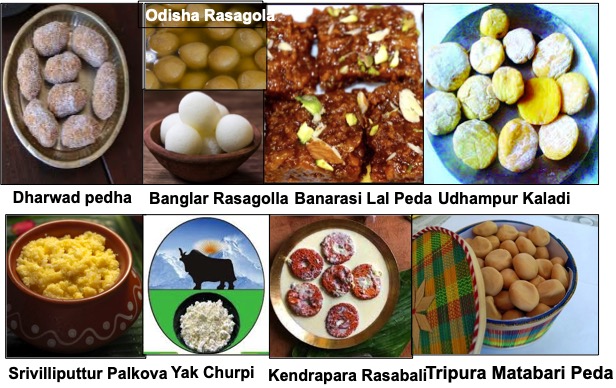Dairy Development in India
Since the inception of Operation Flood in the early 1970s, India has exhibited remarkable growth in milk production and per capita milk availability. Data reveals that milk production triples and per capita availability doubles approximately every 25 years. Following this trend, India is projected to produce over 600 million MT of milk by 2047, leaving the market with an excess of 100 million MT.
Given the current government initiatives, the growth trajectory of the Indian dairy sector seems assured. The government is diligently working towards making India free from Foot and Mouth Disease (FMD) and Brucellosis by 2030. This effort aims to ensure that Indian dairy products meet stringent market access requirements in developed countries. The tagging of 100% cattle and buffaloes under the Bharat PashuDhan initiative will further enhance the traceability of Indian milk products.
Global Dairy Exports scenario
Global dairy markets are willing to pay a premium for products that demonstrate integrity, health, and nutritional value.Let us talk about global exports of a single product cheese. In 2022, globally, leading cheese exporters were Germany ($6.23 billion), Netherlands ($5.19 billion), Italy ($4.66 billion), France ($3.76 billion), and the United States ($2.25 billion). In contrast, India’s total dairy exports, including casein, amounted to USD 384 million in the same year.
The disparity in export values raises questions. Despite India’s significantly larger landmass and producing 9 times more milk than France, why does France export cheese worth nearly ten times the total value of India’s total dairy exports including casein? The discrepancy can be attributed to France’s diverse range of high-quality cheeses, many of which have Geographical Indication (GI) tags, giving them a competitive advantage in global markets. France boasts over 25 varieties of cheese with Geographical Indication (GI) tags, out of a total of 55 tagged cheese types in the EU. This variety and quality give France a competitive edge in global dairy markets.
India’s diversity is often celebrated as one of its greatest strengths, with cultural, culinary, linguistic, and sartorial variations changing every few kilometers. The rich tapestry of Indian cuisine alone reflects this diversity, with each region boasting its unique flavors, ingredients, and cooking techniques. From spicy curries of the south to the hearty breads of the north, India’s food landscape is as varied as its people, offering a culinary journey that’s unparalleled in its depth and diversity.
GI tagging of Dairy products in India
When it comes to our dairy products then we also hold a legacy of dairy products and sweets from all parts of the country. We have a unique opportunity to identify these dairy products and get them GI tagged. Who has not heard about Bengali or Odiya Rasogolla and Sandesh, Alwar milk cake, Amritsari Lassi, Mathura and Baidyanth Pedha, kaladi kulcha with special paneer, Yak cheese, etc. But how many of our dairy products are GI tagged? Not even in double digits. Till now only 634 products in all categories have been given GI Tag and around 477 cases are pending out of which around 14 are under various dairy category from various states..
The confirmed GI tagged dairy products till April 2024 may be listed as follows :
- Dharwad Pedha in Karnataka
- Banglar Rasogolla in West Bengal
- Odisha Rasagola in Odisha
- Srivilliputtur Palkova in Tamil Nadu
- Arunachal Pradesh Yak Churpi
- Kendrapara Rasabali in Odisha
- Tripura Matabari Peda in Tripura
- Banaras Lal Peda in Varanasi Uttar Pradesh
- Udhampur Kaladi in J&K
Challenges in getting dairy and food products GI tagged
Back in 2008, I collaborated with NRDC ( National Research Development Corporation) on a study focusing on the sweet clusters of Mathura and Kalanaur near Rohtak. The outcome of the study was to secure a Geographical Indication (GI) tag for Mathura Peda, a symbol of the region’s rich culinary heritage. Despite our efforts and the involvement of around 160 dedicated halwais, who were members of the local association crafting mawa and Peda, progress was halted. Some dominant players in the association seemed to stifle our initiative.
Fast forward to 2024, I notice a renewed application for the GI tag by a Mithai association of Mathura. I wonder if it’s the same group of passionate halwais I met sixteen years ago. Often, the interests of influential players can obstruct the GI tagging process, which is vital for preserving the legacy and ensuring fair compensation for local artisans.



























